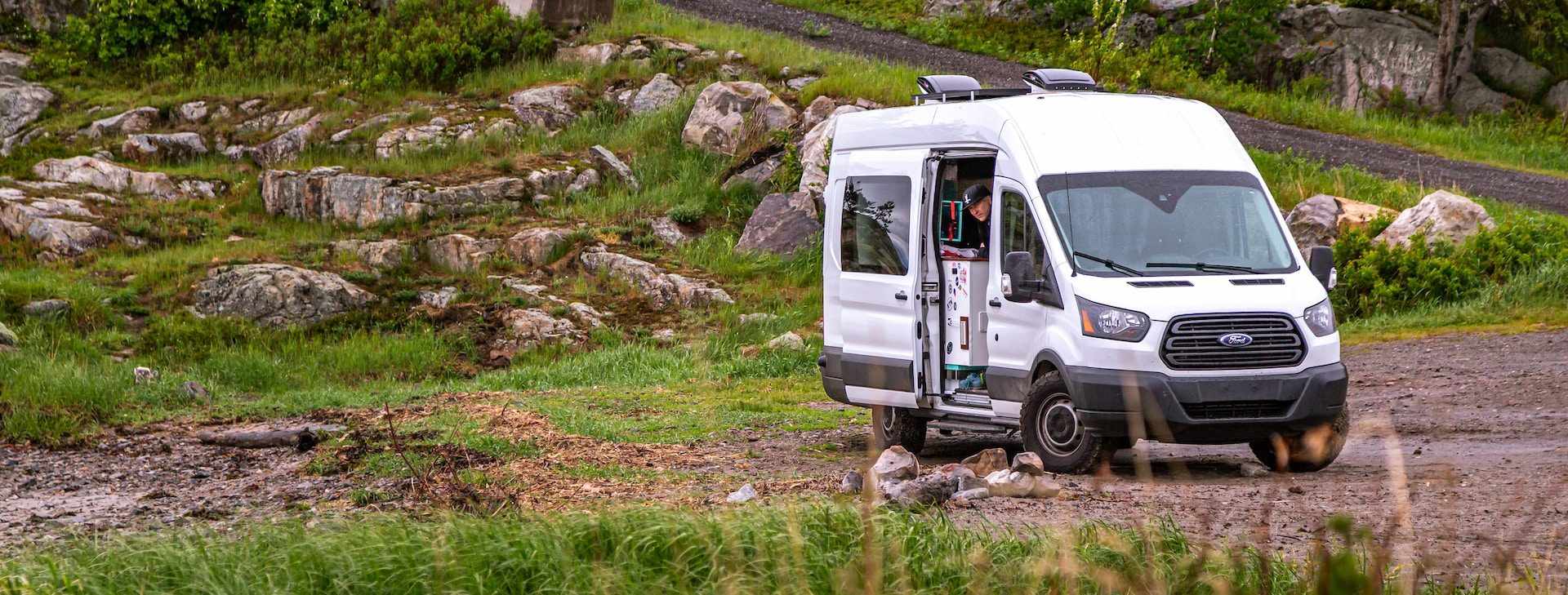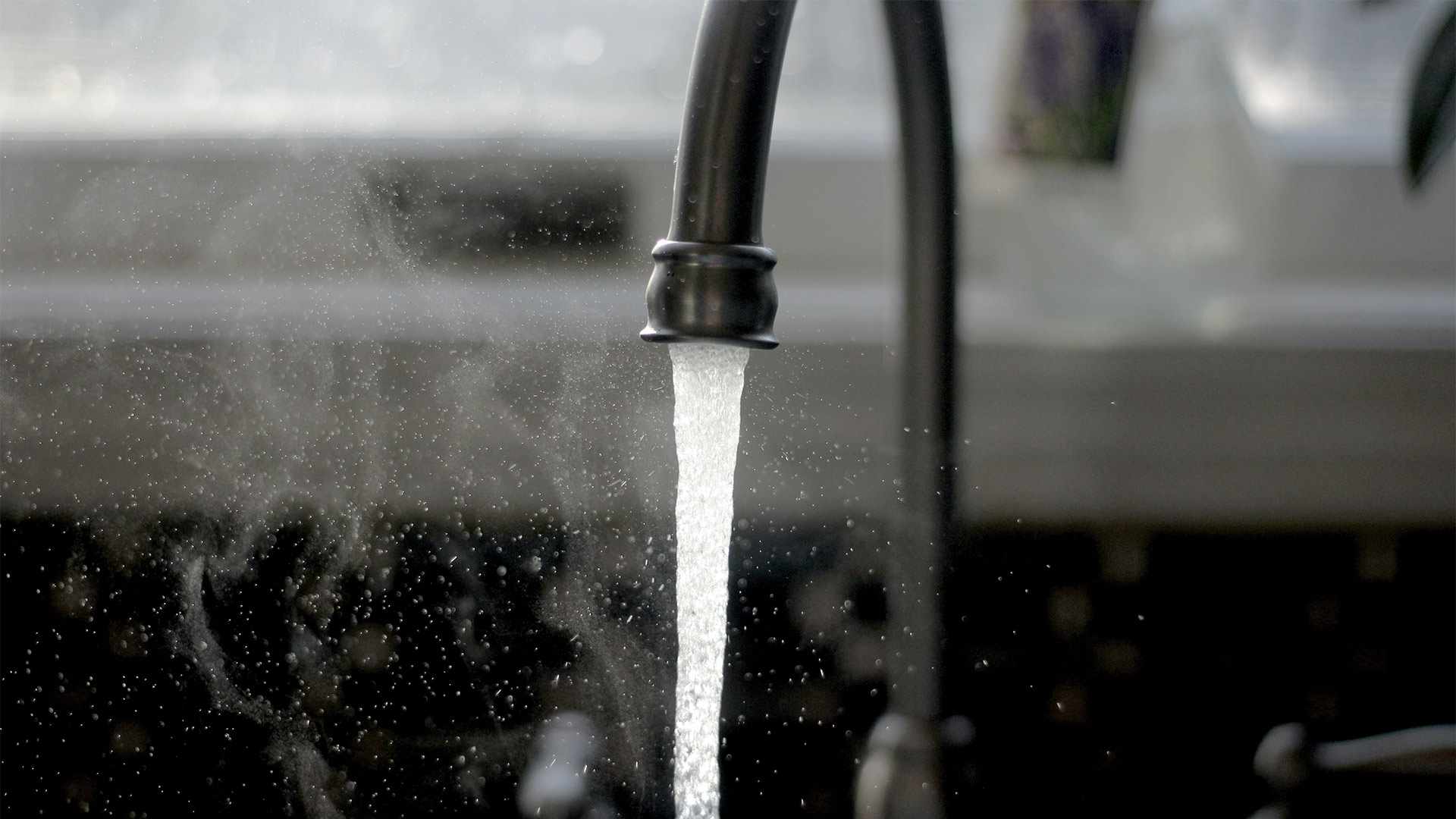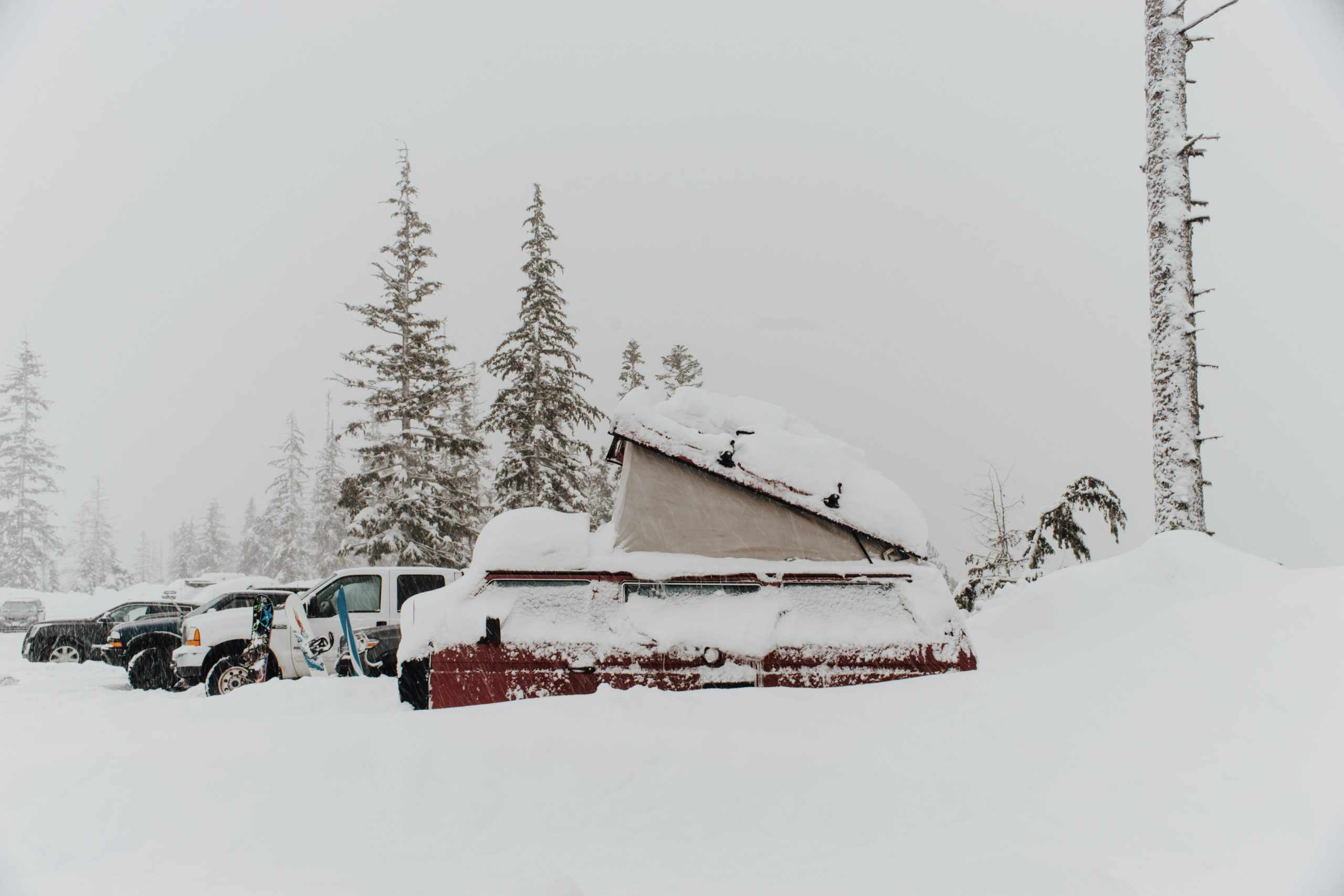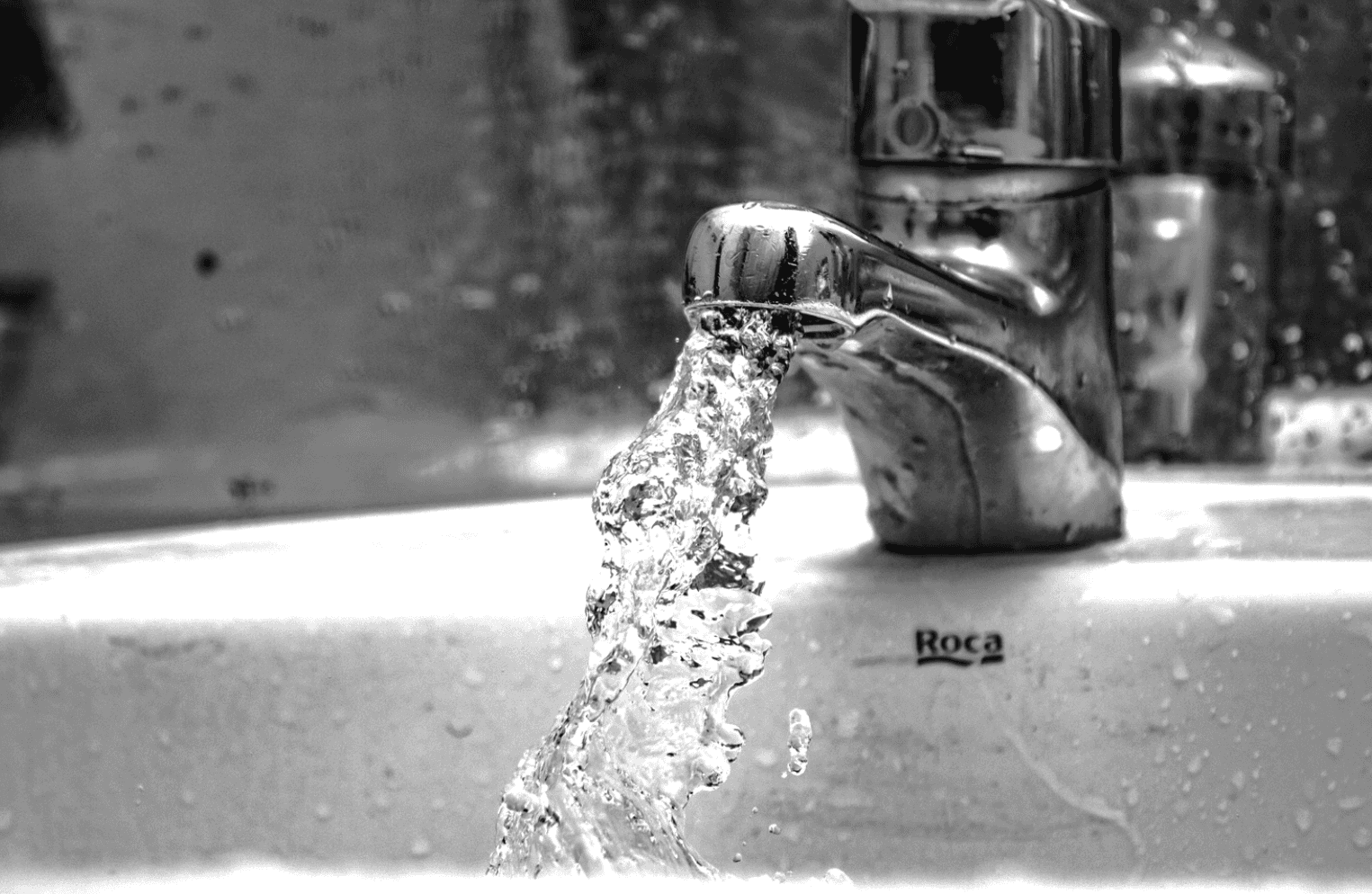Your RV sink and faucet probably aren’t something you give much thought to— until something goes wrong or you’re ready to replace the one you currently have. It serves a vital purpose in your rig and allows you to do basic things like get drinking water out of the tap, wash your hands, and clean your dishes. If you’re thinking about replacing and upgrading your RV sinks and faucets, we have all the info you need to know!
How it’s all connected
To better understand your RV sink, it’s important to know where it falls in your RV’s overall plumbing scheme. The water that comes through your faucet must come from somewhere and go somewhere after it flows down the drain. Here are the different parts of your RV water and plumbing system.
- The freshwater tank and water hookup: Your RV freshwater tank or water hookup is what supplies the water that comes out of your faucets, shower, and toilet.
- The greywater and blackwater tank: Your greywater tank is where your used water from your sink faucet and shower ends up. The blackwater tank holds sewage from the toilet. In some cases, an RV will only have a black tank where all wastewater collects. One of the dirty— but necessary— jobs of RVing is dumping these tanks once they fill up.
- Other parts of your water system: Your water heater, pump, and filter are each important components of your water system.
All of these work together to give your RV faucets a steady stream of fresh, clean water.
Types of RV sinks
All sinks may serve the same function, but not all of them are created equal.
You’ll have a few main types of RV sinks to choose from:
- solid surface sinks
- copper sinks
- stainless steel sinks
- acrylic sinks
- plastic sinks
Solid surface sinks
Solid surface sinks are becoming an increasingly popular option for RVers. These sinks, which often go by brand names such as Corian or Formica, are made from solid synthetic sheets that are created by mixing a mineral compound with acrylic or polyester resins.
| Pros | Cons |
| You’ll have a wide range of styles and colors to choose from. | If you go with a cheaper solid surface option, it could be made with inferior materials such as calcium powder or cheap resins, which can make the sink look old and discolored quickly. |
| They’re durable, but if they happen to get scratched or scuffed due to long-term use, they can be sanded and polished to their original finish. | Solid surface sinks are sensitive to high heat, so you’ll want to avoid putting hot pots and pans in there. |
| They can be seamlessly joined with solid surface countertops. This creates a sleek, modern look and also prevents the growth of mildew or mold around seams. | If you want to join it with your countertops, you’ll need the help of a professional. |
Best RV solid surface sink: Swanstone Solid Surface Double-Bowl Kitchen Sink
This kitchen sink option comes in several colors and is perfect for RVs. The drop-in design makes for easy installation.

Copper sinks
Copper sinks have been appearing in more and more RV remodels and conversions. Copper is the most expensive option but is perfect for the farmhouse and boho-chic style that many RVers aim for.
| Pros | Cons |
| Copper sinks are durable and have a long life span. | They’re expensive. |
| Some finishes (such as a hammered finish) conceal damage well. | Copper may require more maintenance than other materials. |
| Copper is naturally antimicrobial and kills bacteria. | It can be sensitive to acid, heat, and cleaning agents. |
Best RV copper sink option: The Sinkology Rosa Drop-In
Sinkology has a number of copper sinks in a variety of styles and models that can be fitted into your RV kitchen or bathroom, including the Rosa Drop-In model. Though these sinks are designed for homes, many people have found success installing them in their RVs!

Stainless steel sinks
Stainless steel is a classic material that works with many decors. RVers love it because of its durability and reliability.
| Pros | Cons |
| Stainless steel is affordable and provides good value for the price point. | There’s not much variety with stainless steel. |
| This material is durable, can withstand heat, and does not dent easily. It’ll also keep its shine for years and does not tarnish or rust. | Stainless steel sinks can be loud. Dropping a dish or pan can sound like a small explosion! |
| They are easy to clean and resistant to many bacteria. | Though they are durable, they can scratch if you use abrasive cleaners. |
Best stainless steel RV sink: Modena Undermount RV Sink
If you want to undertake a DIY undermount sink project, this Modena sink model has excellent reviews and will look gorgeous in any RV.

Acrylic sinks
Acrylic sinks are comprised of molded polycarbonate reinforced with fiberglass and resin. They are a popular choice for RVers because of their lightweight, easy installation, and low price point.
| Pros | Cons |
| Acrylic sinks come in a variety of styles. | Acrylic is fairly durable for light use but isn’t as long-lived as other options. It doesn’t hold up to heat well, and scratches and gouges fairly easily. |
| Minor scratches can be buffed out using a buffing compound. | The polycarbonate doesn’t hold up well to petroleum-based chemicals. |
| It’s very DIY-friendly and easy to install. | Plastic-on-metal joints can work loose with vibration, causing leaks. |
Best acrylic RV sink: Thermocast 22440 Inverness Cast Acrylic Single Bowl Kitchen Sink

Fans of American-made Thermocast sinks have positive things to say about their acrylic offerings, including this drop-in style kitchen sink.
Plastic RV sinks
Cheap plastic sinks are often found in lower-end campers and travel trailers. These sinks are the least expensive option, but also have fewer benefits.
| Pros | Cons |
| They are inexpensive. | Plastic sinks are the least durable option and are prone to scratches, stains, and discoloration. |
| They are very lightweight. | Plastic sinks can crack with age, which can’t be fixed and must instead be replaced. |
Best plastic RV sink: RecPro Rectangle RV Bathroom Sink

Plastic sinks are most often found in bathrooms since they don’t hold up well to the wear and tear of kitchen use. This RecPro RV bathroom sink is perfect if you’re looking for a simple and inexpensive bathroom replacement.
Finding the best RV sink
Here’s what you need to think about when selecting a sink.
- What kind of use is it going to see? First and foremost, you should consider how often your sink will be used and for what. If you’re a full-timer who loves cooking, you’re probably going to want to invest in a sink that can hold up to heavy use, such as stainless steel or copper. If you’re looking for a bathroom sink that will see occasional use, you can get by with a cheaper, less durable option.
- What type of mount do you want? There are several sink installation types to choose from: drop-in, undermount, and farmhouse style sinks. Drop-in sinks fit into a hole and have a lip that hangs over the counter. Undermounted sinks are mounted from the underside of the countertop. Farmhouse-style sinks stick out from the counter, allowing you to see the front.
- What size do you need? Not all RV sink sizes are the same. Maybe you need a single, shallow bowl. Perhaps you want a deep double basin. Be sure to measure the dimensions of your current sink to see what fits.
- How DIY do you want to get? If you want to do a simple sink swap, you’ll want to get a model that closely resembles what you currently have. If you’re comfortable taking on a bigger project, you can get one that is different. You will need to be prepared, however, to do a little extra carpentry/plumbing work.
- Does it match your aesthetic? If style and aesthetics are important to you, you’ll want to consider how your sink fits in with the rest of your RV.
Knowing the answers to these questions can help you select the right material, style, and model that’s right for your RV.
Choosing the right RV faucet
If you purchased a new sink, you’re probably thinking of an RV faucet upgrade as well. Here’s what you need to know.
Your RV faucet versus your home faucet
Good news— you can use pretty much any faucet you’d use at home in your RV. Though RV plumbing differs from residential setups, adapter kits make it possible to use the same faucets.
This means you have endless styles and finishes to choose from.
Things to consider
The main thing that you will want to consider when choosing the right sink is whether or not the connections will match up with what your RV is equipped with. Make sure all lines will be able to connect. If the sizes don’t match up, you will need to purchase an additional adapter.
You’ll also want to consider the number of holes that your RV has for the faucet and how many your sink has. If your sink has only one hole, be sure to get a corresponding faucet. If your sink has three holes, you can usually buy any type of faucet. Typically single-hole faucets come with a plate that covers up the two cutouts that aren’t used.
Buying options
A quick browse of any online retailer or home improvement store should give you plenty of buying options, but here are a couple of our favorites:
WEWE Kitchen Faucet with Pull Down Sprayer
SOKA Brass Bathroom Faucet

Where to buy RV sinks and faucets
RV sinks and faucets can be purchased from a number of places, including:
- RV dealerships and part houses
- Home improvement and hardware stores
- Online retailers
If you have worries about finding a quality sink or faucet, be sure to read reviews or reach out to the RV community to ask about their sink and faucet buying experiences.
Replacing your RV sink and faucet
Many times, replacing your RV sink and faucet can be a DIY job.
Replacing the faucet
Replacing the faucet is as easy as 1-2-3.
- Turn off the water. Aways start by turning off your RV water pump and disconnecting from city water, if you’re hooked up. Release pressure from the lines by opening up the faucets to help you stay dry while making the switch. It’s also a good idea to have a bucket handy to catch any water remaining in the lines.
- Remove the old faucet. Under the sink, unscrew the connections using a wrench. Pull the faucet out and remove any old silicone or caulking using a putty knife.
- Install the new faucet. Insert the new hardware and secure it. Screw on any adapters, if necessary, and hook up the water connections. If you want, you can also reseal around the fixture with silicone and a caulk gun.
After everything is installed, test the system by turning the water back on and opening up the faucet. Check leaks or dripping water. If you don’t see anything, you’re good to go! Installing a new sink faucet is a quick and easy way to breathe new life into your kitchen or bathroom.
If you come across a problem that you can’t fix, be sure to take your rig into an RV repair location or have a mobile repair service come out to you. Water damage can be costly!
Replacing the sink
Replacing your RV sink may be a little more complicated, depending on whether or not you have a sink that is an exact fit or if you’ll need to cut out some of your countertop space. For the purpose of this article, we’re going to assume that you don’t need to make any adjustments to the space.
- Turn off the water. Again, always start by turning off your RV water pump and disconnecting from city water. Release pressure from lines and have a bucket ready for excess water.
- Remove sink fixtures. Follow the instructions from above.
- Remove old caulking around the sink. Using a utility knife, cut through the existing caulking.
- Disconnect plumbing. Under your sink, you’ll find one or two drain connections. Disconnect those from the sink.
- Remove connection brackets. Most RV sinks are secured using connection brackets. Unscrew the brackets.
- Remove the sink, and replace it.
- Install the new sink. Follow manufacturer’s instructions to install your new sink. Start by fastening it, then reconnect the plumbing. After, you can re-caulk the sink and reinstall the faucet.
After you install the new sink, test it by turning the water on and letting it drain. Watch for leaks around the faucet and sink drain.
Keeping the fun and water running
A quality sink and faucet is just one way to make your RV both functional and attractive for your renters. Use these tips to spruce up your kitchen and bathroom to get your RV ready for the road today!









